
Journal of Spatial Information Science
Scope & Guideline
Fostering Collaboration in Spatial Information Science
Introduction
Aims and Scopes
- GeoAI and Advanced Data Analytics:
The journal emphasizes the application of GeoAI, combining geographic information science with artificial intelligence techniques to derive insights from spatial data. - Spatial Analysis and Modeling:
Research often involves advanced spatial analysis techniques, including modeling human behaviors, environmental patterns, and urban dynamics, using both quantitative and qualitative methodologies. - Education and Workforce Development in GIScience:
There is a strong focus on enhancing GIScience education and employability, addressing the skills gap in the workforce and integrating GIScience into multidisciplinary academic programs. - Volunteer Geographic Information (VGI):
The journal explores methodologies for engaging volunteers in geographic data collection and the implications for humanitarian and community-based projects. - Spatial Data Sharing and Ownership:
Recent publications reflect a growing interest in frameworks for spatial data sharing, access control, and ownership, particularly in the context of evolving digital landscapes. - Indoor and Outdoor Spatial Analysis:
Research covers both outdoor spatial phenomena and the emerging field of indoor mapping, addressing challenges in navigation, physical distancing, and urban planning.
Trending and Emerging
- Integration of AI in GIScience:
There is a significant increase in research exploring the intersection of AI and GIScience, particularly in applications like GeoAI, which enhances spatial data analysis and decision-making. - Indoor Mapping and Spatial Analysis:
The rise of indoor mapping technology has led to a growing body of research focused on indoor spatial analysis, which addresses challenges in navigation and safety in built environments. - User-Generated Content and Social Media Analysis:
Emerging studies utilize user-generated content from social media to analyze spatial patterns and behaviors, indicating a trend towards leveraging big data for geographic insights. - Multi-Scale and Adaptive Mapping Techniques:
Research is increasingly focusing on adaptive mapping techniques that accommodate various scales, promoting usability and accessibility in spatial representations. - Humanitarian Applications of VGI:
There is a notable trend in exploring the applications of volunteer geographic information in humanitarian contexts, enhancing community engagement and response strategies.
Declining or Waning
- Historical GIS Applications:
There has been a noticeable decrease in publications focusing solely on historical GIS applications, indicating a potential shift towards more contemporary or real-time spatial analysis. - Basic GIS Software Techniques:
Research centered around basic GIS software functionalities and traditional mapping techniques seems to be waning, as the field shifts towards more complex analyses and integrations with AI. - Static Spatial Representations:
The focus on static maps and traditional cartographic techniques is declining, with more emphasis on dynamic, interactive, and user-generated spatial data. - Environmental Perception Studies:
While still relevant, studies specifically examining environmental perception through traditional survey methods appear less frequently, possibly overshadowed by more data-driven approaches. - Global Pandemic Impact Studies:
Although the pandemic has spurred initial interest in spatial behavior studies, such themes are now less frequently published as researchers pivot to broader or different spatial challenges.
Similar Journals
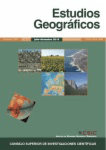
Estudios Geograficos
Shaping Insights, Influencing PoliciesEstudios Geograficos, a prominent journal published by the CONSEJO SUPERIOR INVESTIGACIONES CIENTIFICAS-CSIC in Spain, serves as a vital platform for advancing the fields of geography and earth-surface processes. With an ISSN of 0014-1496 and E-ISSN of 1988-8546, the journal has been committed to Open Access since 1996, ensuring that its valuable research is accessible to a global audience. Recognized as a Q3 journal in both Earth-Surface Processes and Geography, Planning and Development, it plays a crucial role in shaping understanding and policy related to our planet. As of 2023, it holds a respectable rank of 562nd in Social Sciences Geography and maintains a percentile standing, reflecting its significance within the academic community. Covering a diverse range of topics, Estudios Geograficos aims to foster scholarly dialogue and disseminate innovative interdisciplinary findings, providing researchers, professionals, and students with critical insights and tools to address contemporary geographic challenges.

Computational Urban Science
Shaping Smart Cities Through Computational ExcellenceComputational Urban Science is a pioneering open-access journal published by SpringerNature, dedicated to the interdisciplinary exploration of urban systems through computational research and innovative technologies. Launched in 2021, the journal is committed to advancing understanding in fields such as Artificial Intelligence, Computer Science Applications, and Environmental Science, alongside its significant focus on Urban Studies—a category where it has attained a distinguished Q1 ranking. With a robust impact reflected in its Scopus rankings, including a 78th percentile in Urban Studies, Computational Urban Science serves as a vital platform for researchers and professionals seeking to address contemporary urban challenges with data-driven insights. This journal not only champions comprehensive discussions and research findings but also invites contributions that emphasize the role of computational methodologies in shaping sustainable urban environments. Embrace the opportunity to engage with transformative research and join a growing community dedicated to the future of urban science.
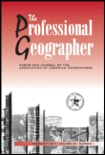
PROFESSIONAL GEOGRAPHER
Where Geography Meets Impactful Research and CollaborationPROFESSIONAL GEOGRAPHER is a prominent journal in the fields of geography and earth-surface processes, published by Routledge Journals, Taylor & Francis Ltd. With a rich history dating back to 1949 and continuing through 2024, it serves as a vital platform for researchers, professionals, and students to explore and disseminate groundbreaking research and insights within the geographical sciences. The journal holds a respectable impact factor, placing it in the Q2 quartile for both Earth-Surface Processes and Geography, Planning and Development as of 2023, highlighting its importance in these critical academic areas. The journal ranks #273 out of 821 in Geography and Planning and #70 out of 179 in Earth and Planetary Sciences on Scopus, reflecting its robust contribution to advancing knowledge in social sciences. Although it does not currently offer open access options, it still provides invaluable content that influences pedagogy and research in geography. Its comprehensive scope invites a wide range of geospatial topics, encouraging interdisciplinary dialogue and collaboration across the global academic community.
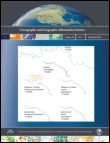
Cartography and Geographic Information Science
Pioneering New Frontiers in Geographic Information SystemsCartography and Geographic Information Science is a premier journal published by Taylor & Francis Inc, focusing on the interdisciplinary realms of geography, planning, and technological innovation. With an impressive impact factor and ranking in the top quartiles across various categories, including Q1 in Geography, Planning and Development and Q2 in Civil and Structural Engineering, this journal serves as an essential resource for researchers, professionals, and students alike, promoting cutting-edge research and advancements in cartography and geographic information systems. The journal disseminates high-quality articles that explore both theoretical and practical aspects of geographic information, aiming to enhance the understanding and application of spatial data. As the field evolves, Cartography and Geographic Information Science remains a vital forum for innovation and scholarly dialogue, offering accessible content to a global audience. With its commitment to rigor and relevance, it plays a critical role in advancing the landscapes of geography and environmental sciences.

Revue Internationale de Geomatique
Exploring Interdisciplinary Insights in GeomaticsRevue Internationale de Geomatique (ISSN: 1260-5875, E-ISSN: 2116-7060) is a prestigious journal published by TECH SCIENCE PRESS, dedicated to advancing the field of geomatics. This journal serves as a vital platform for disseminating significant research findings, cutting-edge methodologies, and innovative applications within the realm of spatial data and technology. With an emphasis on interdisciplinary studies, it fosters collaboration among researchers, professionals, and students across various domains, including environmental science, urban planning, and geographic information systems (GIS). Although not an open-access journal, Revue Internationale de Geomatique maintains a rigorous peer-review process ensuring the publication of high-quality articles that contribute to the evolving landscape of geomatics. Given its relevance and commitment to scholarly excellence, this journal is a crucial resource for advancing knowledge and practices in the ever-growing field of spatial information science.
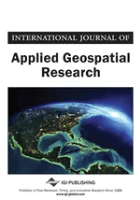
International Journal of Applied Geospatial Research
Navigating the future of geography and Earth sciences.International Journal of Applied Geospatial Research is an esteemed publication dedicated to advancing the field of geospatial research. Published by IGI Global, this journal provides a platform for innovative studies from 2010 to 2024 that encourage multidisciplinary contributions across Earth and planetary sciences and geography. While currently not offering open access, the journal's focus on applied research ensures that it remains highly relevant to both academics and industry professionals alike. With an ISSN of 1947-9654 and an E-ISSN of 1947-9662, it has been indexed in various databases, reflecting its emerging significance with rankings such as Q4 in Earth and Planetary Sciences and Geography according to Scopus, placing it at the intersection of critical research and practical application. Researchers, professionals, and students can expect insightful articles that enhance understanding and drive innovation in geospatial applications essential for informed decision-making in a rapidly changing world.

Biblio 3W-Barcelona
Advancing knowledge in library and information science.Biblio 3W-Barcelona is a prominent academic journal published by the Universitat de Barcelona, Servei Publicacions, focusing on the dynamic field of library and information science. Established to foster scholarly communication, this journal provides a platform for researchers, professionals, and students dedicated to the advancement of bibliographic studies and library management. Despite lacking a current impact factor, Biblio 3W-Barcelona is recognized for its commitment to high-quality research and its contribution to the field, making it a valuable resource for those engaged in understanding the complexities of information dissemination in modern society. The journal features original research articles, critical reviews, and case studies that invite varied perspectives within the realm of librarianship. Readers can access its comprehensive body of work freely, enriching their knowledge and fostering practical applications in library science. For submission guidelines and further information, visit their website.

GEOINFORMATICA
Pioneering Methodologies for a Spatially Aware WorldGEOINFORMATICA is a leading journal in the field of geoinformatics, widely recognized for its contributions to both Geography, Planning and Development as well as Information Systems. Published by Springer, this journal holds a distinguished Q1 ranking in Geography and a Q2 ranking in Information Systems as of 2023, reflecting its high-impact research contributions and authoritative voice in these disciplines. Since its inception in 1997, GEOINFORMATICA has provided a platform for innovative research, methodologies, and applications related to geographic information science, spatial data analysis, and remote sensing technologies. The journal's rigorous peer-review process and strategic positioning within the academic landscape allow it to attract a diverse array of publications, assisting researchers, professionals, and students in understanding complex spatial phenomena. While the journal does not offer Open Access, it remains a vital resource located in the Netherlands, and its indexed status has secured impressive Scopus rankings—#131 in Geography, Planning and Development, and #134 in Information Systems, showcasing its robust scholarly influence. Explore the latest developments and cutting-edge research through GEOINFORMATICA, where scholarly excellence converges with real-world relevance.
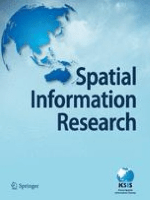
Spatial Information Research
Empowering interdisciplinary collaboration in spatial information.Spatial Information Research, published by SPRINGER SINGAPORE PTE LTD, is a prominent journal committed to advancing the interdisciplinary field of spatial information science. With an ISSN of 2366-3286 and an E-ISSN of 2366-3294, this journal serves as a crucial platform for disseminating research findings from 2016 to 2024, focusing on applications in Artificial Intelligence, Computer Science Applications, and Geography, among others. Ranking in the Q2 and Q3 quartiles across various categories, it showcases impactful research that informs geographic planning, environmental sciences, and computational methodologies. The journal's rigorous peer-review process ensures high-quality contributions that offer insights for both academic scholars and industry professionals. While retaining exclusive access options, Spatial Information Research is a vital resource for researchers eager to explore the complexities of spatial data and its applications in real-world scenarios.

GEOGRAPHICAL ANALYSIS
Unveiling Insights into Spatial DynamicsGEOGRAPHICAL ANALYSIS, published by WILEY, is a premier scholarly journal that has been at the forefront of geographical and earth-surface research since its inception in 1969. With an ISSN of 0016-7363 and an E-ISSN of 1538-4632, this journal has established itself as an essential resource for researchers and professionals in the fields of Earth-Surface Processes and Geography, Planning and Development, achieving impressive rankings of 13th and 60th in their respective categories according to Scopus, placing it in the Q1 quartile for both. The journal is renowned for its rigorous peer-reviewed articles that contribute valuable insights into spatial analysis, environmental impacts, and urban planning, thus fostering a deeper understanding of geographical phenomena. With access options available through traditional subscriptions, GEOGRAPHICAL ANALYSIS continues to serve as a critical platform for the dissemination of cutting-edge research and innovative methodologies, ultimately shaping the future of geographical inquiry and application.